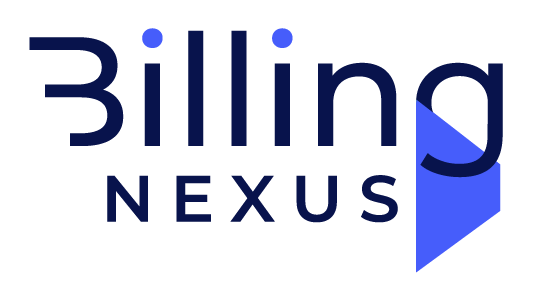How Efficient Medical Billing Improves Healthcare Cash Flow
Medical billing is the backbone of the healthcare revenue cycle. When done efficiently, it ensures that healthcare providers are reimbursed on time, leading to improved cash flow and financial stability. In a sector where operational costs are high and margins can be tight, efficient billing practices are not just important but essential. This blog explores how streamlined medical billing processes can improve cash flow and foster a financially healthy practice.
The Importance of Medical Billing Efficiency
Efficient medical billing is not just about processing claims quickly. It involves accurate data collection, proper coding, timely submissions, and effective denial management. These elements work together to:
- Enhance Revenue Generation: Accurate and timely billing ensures a steady influx of payments.
- Reduce Delays: Streamlined processes prevent bottlenecks in the revenue cycle.
- Boost Patient Satisfaction: Clear and error-free billing improves the patient experience.
- Ensure Compliance: Proper billing minimizes the risk of legal and regulatory issues.
How Inefficiencies Impact Healthcare Cash Flow
Inefficient billing practices can have severe consequences on a healthcare provider’s financial health:
- Increased Denial Rates: Errors in claims lead to denials, delaying reimbursements.
- Higher Operational Costs: Resolving denied claims consumes additional time and resources.
- Lost Revenue Opportunities: Unresolved claims and billing inaccuracies result in lost income.
- Damaged Patient Relationships: Billing issues can erode trust and satisfaction.
Key Strategies to Improve Medical Billing Efficiency
Implementing best practices in medical billing can transform your revenue cycle and significantly improve cash flow.
1. Automate Billing Processes
- Benefits: Automation reduces human errors, speeds up claim submissions, and ensures compliance with coding updates.
- Tools to Use: Medical billing software with features like automated coding, claims scrubbing, and denial management.
2. Train and Educate Staff
- Focus Areas: Train billing staff on coding updates, payer policies, and software tools.
- Outcomes: Improved accuracy in claims and quicker resolution of billing issues.
3. Verify Patient Information
- Steps: Confirm insurance details during scheduling and check-in.
- Impact: Reduces the likelihood of claim denials due to incorrect or outdated information.
4. Use Claims Scrubbing Technology
- Purpose: Claims scrubbing tools identify errors before submission, increasing first-pass acceptance rates.
- Benefits: Fewer denials and quicker reimbursements.
5. Manage Denials Proactively
- Best Practices: Track denial patterns, address root causes, and resubmit corrected claims promptly.
- Result: Reduced revenue leakage and faster payment cycles.
6. Monitor Key Performance Indicators (KPIs)
- Metrics to Track:
- First-pass claim acceptance rate.
- Average days in accounts receivable (AR).
- Denial rate and resolution time.
- Advantages: Regular monitoring helps identify inefficiencies and implement timely improvements.
7. Outsource Medical Billing
- Why Outsource: Professional billing services specialize in accuracy, compliance, and efficiency.
- Outcomes: Reduced operational burden and improved cash flow.
The Role of Technology in Medical Billing
Modern technology is a game-changer in medical billing. Here’s how it can help:
1. Electronic Health Records (EHR) Integration
- Benefits: Seamless data transfer between clinical and billing systems reduces errors and saves time.
2. Artificial Intelligence (AI) and Machine Learning
- Capabilities: AI-powered tools identify patterns in denials, suggest coding improvements, and streamline documentation.
3. Cloud-Based Billing Solutions
- Advantages: These systems offer real-time updates, remote access, and enhanced security.
4. Analytics and Reporting Tools
- Purpose: Advanced analytics provide insights into billing trends and highlight areas for improvement.
Case Study: Transforming Cash Flow Through Efficient Billing
Scenario: A multi-specialty clinic faced frequent claim denials and delayed payments, causing cash flow issues.
Challenges:
- High denial rates due to coding errors.
- Prolonged AR days.
- Inefficient denial management.
Solutions:
- Implemented automated billing software with claims scrubbing.
- Trained staff on updated coding standards.
- Established a dedicated team for denial management.
Results:
- Denial rates reduced by 40% within three months.
- AR days dropped from 45 to 28.
- Monthly cash flow increased by 25%.
Common Myths About Medical Billing Efficiency
- Myth: “Outsourcing billing means losing control over finances.”
Reality: Reliable billing services provide transparency and detailed reports, allowing providers to stay informed. - Myth: “Billing software is too expensive for small practices.”
Reality: Many scalable, cost-effective solutions cater to practices of all sizes. - Myth: “Denials are unavoidable.”
Reality: Proactive measures like claims scrubbing and training can significantly reduce denial rates.
Conclusion
Efficient medical billing is essential for maintaining healthy cash flow in any healthcare practice. By automating processes, investing in staff training, leveraging technology, and addressing inefficiencies, providers can streamline their revenue cycle and achieve financial stability. Prioritizing billing efficiency not only boosts cash flow but also enhances the overall patient experience, paving the way for long-term success.

